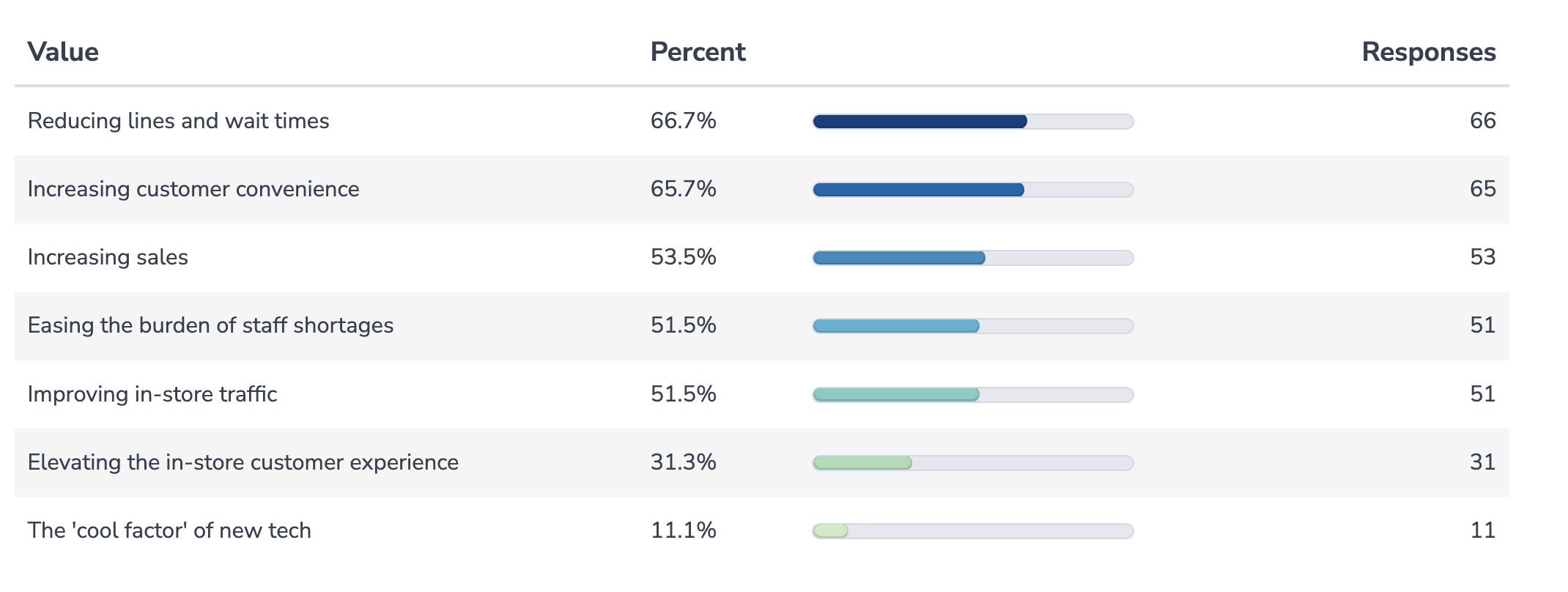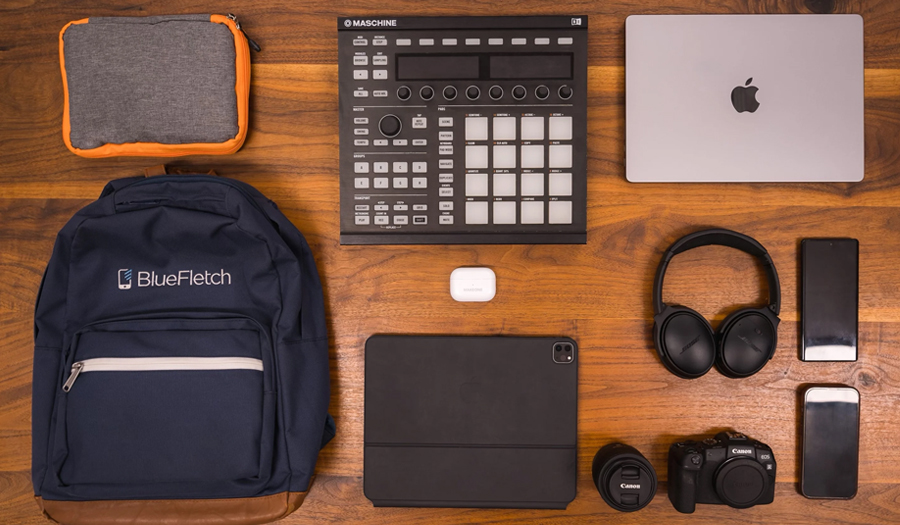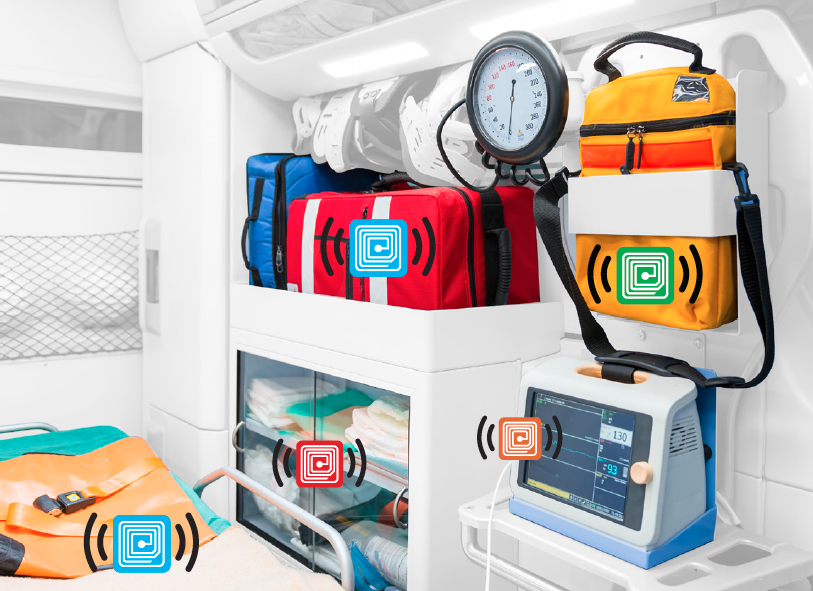Much to my mother's dismay, our world is becoming increasingly digital.
With many consumers looking for convenience and retailers challenged by post-pandemic labor shortages, it's no wonder that interest in self-service technology is on the rise.
But what are the cost expectations? Which problems are retailers looking to solve with self-service tech?
We asked these questions and more to executives, IT leaders, and managers across grocery, clothing and apparel, electronics, home goods, department stores, general merchandise, and pharmacies.
Our hope is that these insights will help IT solution providers in the retail realm better position their company's products and services. Let's dig in.
The Methodology
We employed a third-party data collection agency to gather survey responses for us from retail executives across a variety of subsegments.
Respondents were recruited to the combination online/telephone survey based on firmographic details such as industry, seniority, and job function and were monetarily incentivized to complete our 30-question survey.
Our Findings
First, we wanted to understand who we were getting input from in terms of seniority and company size and how involved they were with decisions about technology.
Question 1:
What is your job seniority?
76% of the respondents were Managers (39) or Directors (37) with job functions spread across IT, Operations, Regional and Store-Level Management, and Executive roles.
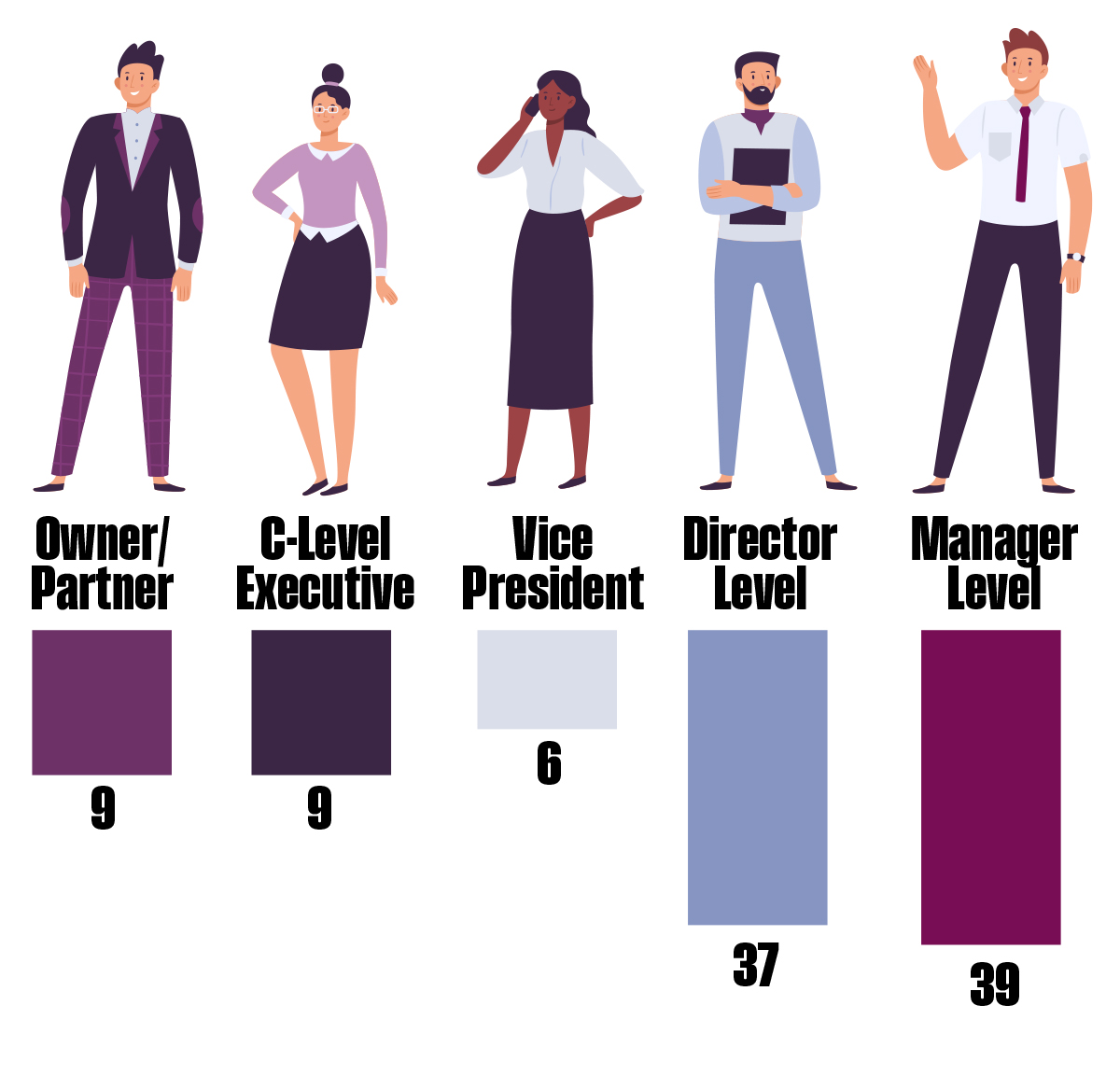
Question 2:
How many employees work at your company—including all locations?
1,000+ employee businesses were the largest segment, with 32 respondents, followed by 501-100 (23), and 251-500 (18).
Since we were most interested in learning from retail businesses that are using self-service technology today, we asked our third-party data partner to focus on larger organizations with 100+ employees with the means and necessity to adopt self-service tech in their physical locations. However, we did not use number of employees to disqualify survey respondents.
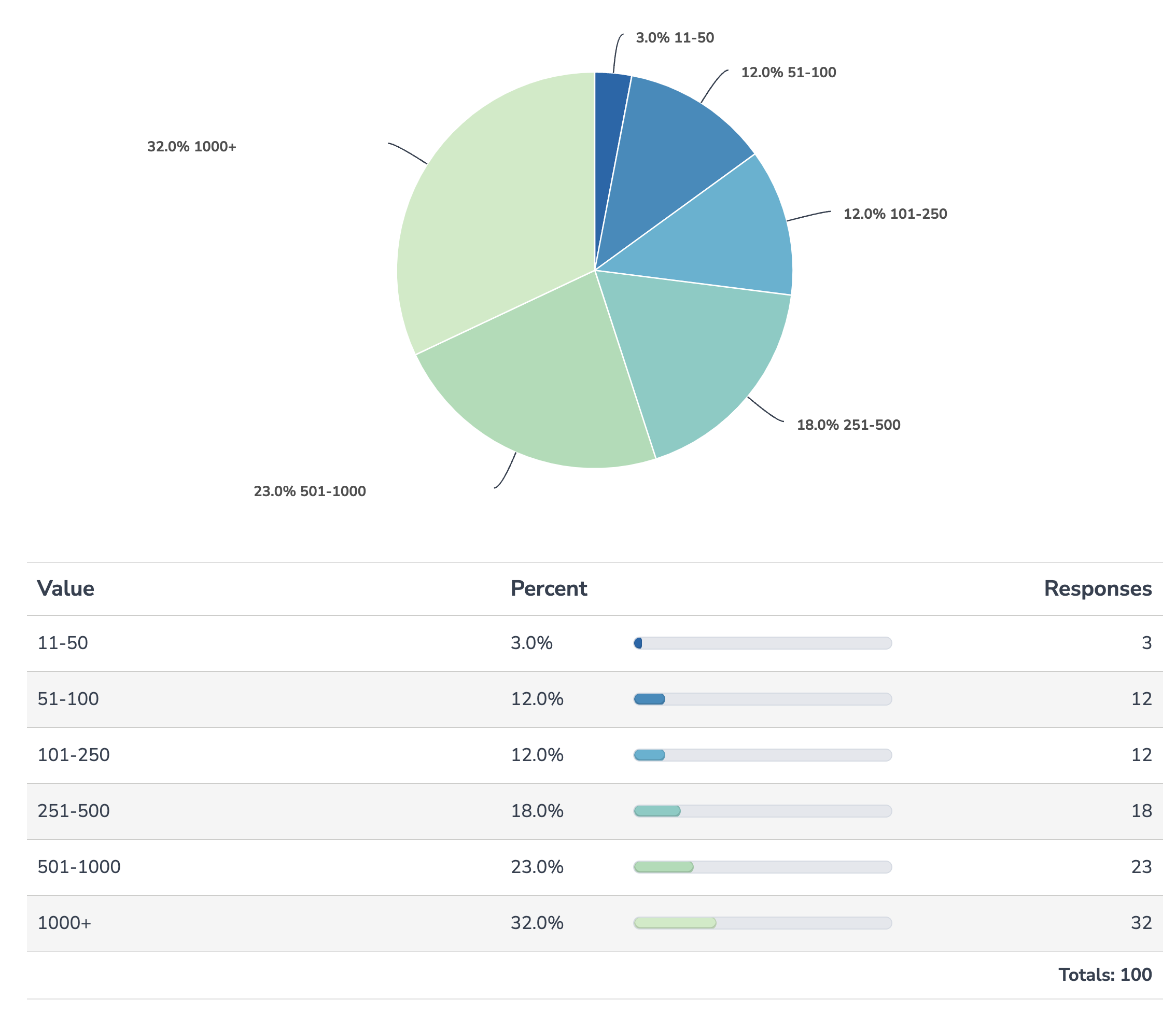
Question 3:
Which of the following most closely describes your business type:
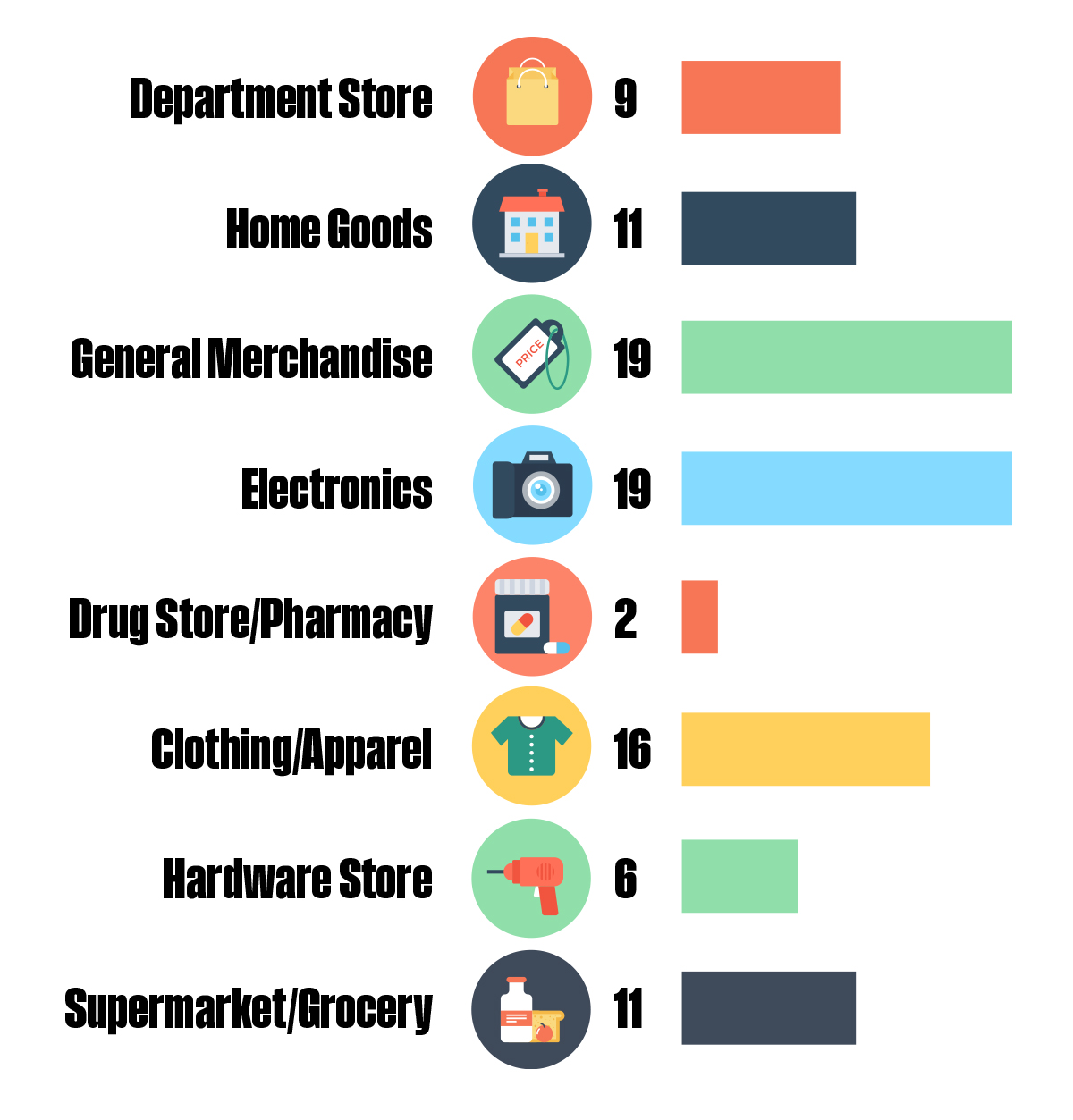
Question 4:
Which of the following best describes your involvement in technology decisions in your business?
We recognize that in today's business environment, technology decisions are often made by committees of between 5-6 colleagues representing various functions within the business. For that reason, we asked how involved our respondents are in the technology decisions at their companies.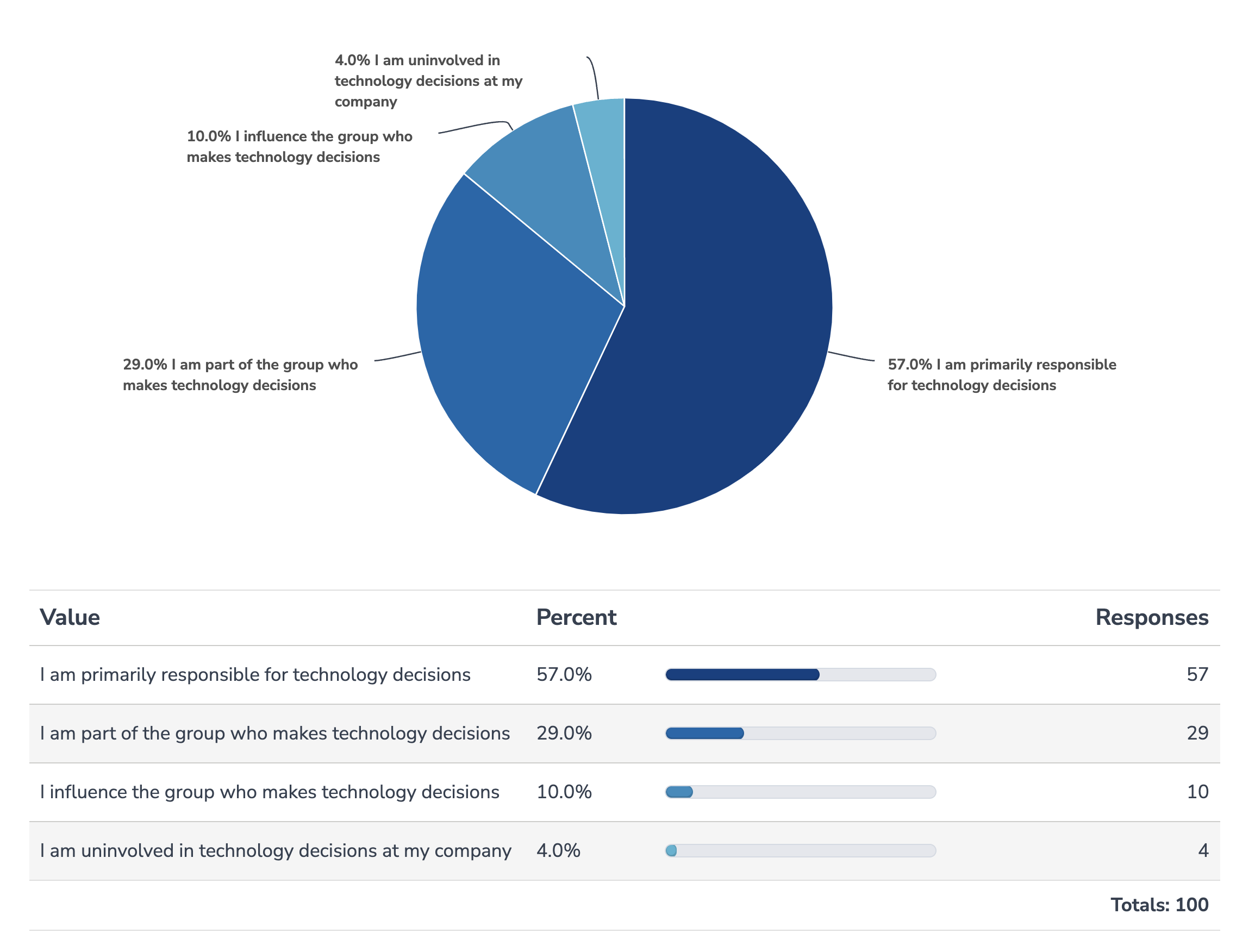
Question 5:
What would you expect to pay for various types of self-service tech?
Next, we attempted to gauge end-customer cost expectations. This was a tricky series of questions to ask without over-complicating the questions with caveats and detail around hardware, software, and services, so we kept things simple in an attempt to gain some directional insight into how retailers value and perceive the cost of the various type of self-service technologies.
Below are the average cost estimates across all respondents:
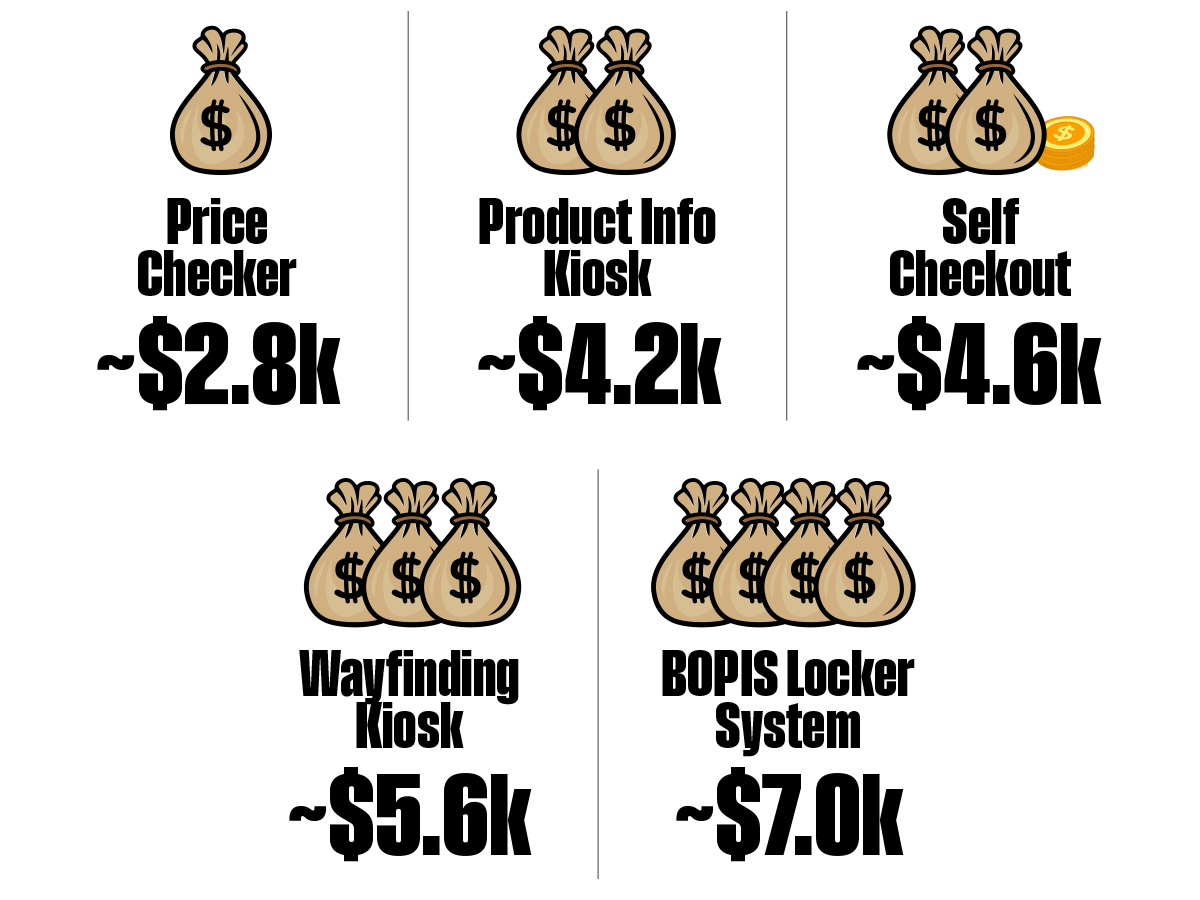
Question 6:
Overall, how satisfied are your customers with the self-service technology in your store(s)?
The data very clearly illustrates that for those that have self-service technology deployed today, satisfaction levels are high. This seems to indicate that the in-market solutions are delivering on their promises.

Question 7:
Which of the following most accurately describes your feelings about the usefulness of self-service technology in your particular retail segment?
The highest sentiment was reported by Electronics, where 53% of respondents indicated that self-service technology was critical for their business, and Home Goods, where 50% reported the same.
You're probably thinking, "What about supermarkets?!" Although supermarket/grocery respondents didn't indicate that self-service technology was critical to their business at high rates, 9 out of the 10 grocery respondents indicated either Critical (3) or Very Useful (6).
96% of all respondents agreed that self-service technology positively affects customer experience/satisfaction.
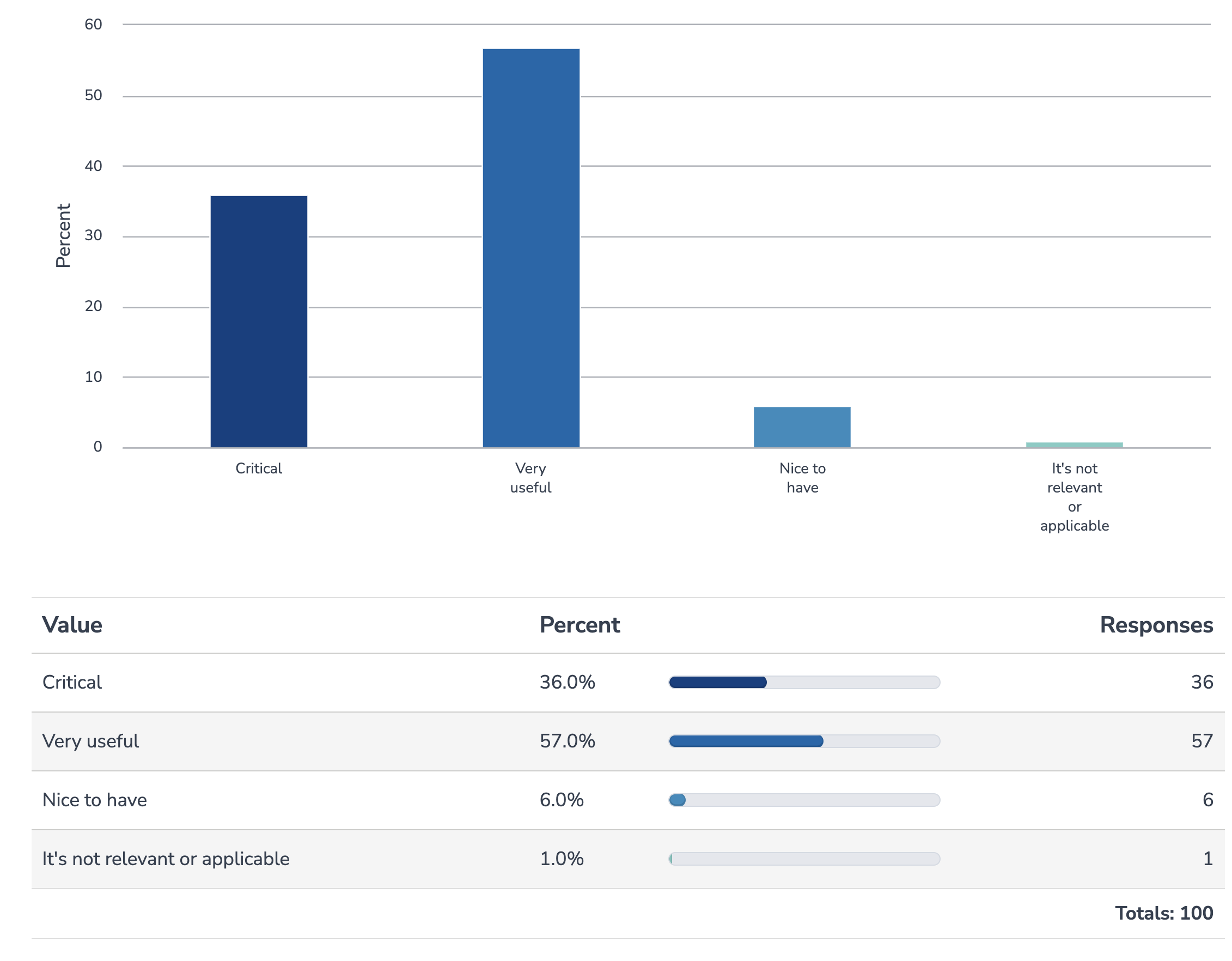
Question 8:
How are you using self-service technology in your business today?
In an effort to better understand which types of self-service tech are being deployed and to what extent, we asked respondents to select all of the different SST currently deployed in their businesses.
Much of what we learned was in line with expectations—particularly when it came to Self-Checkout (85 out of 100) and Price Checkers (68 out of 100), but we were a bit surprised to see Customer Feedback Surveys (32 out of 100) and Smart Lockers for BOPIS (29 out of 100) ranking so highly.
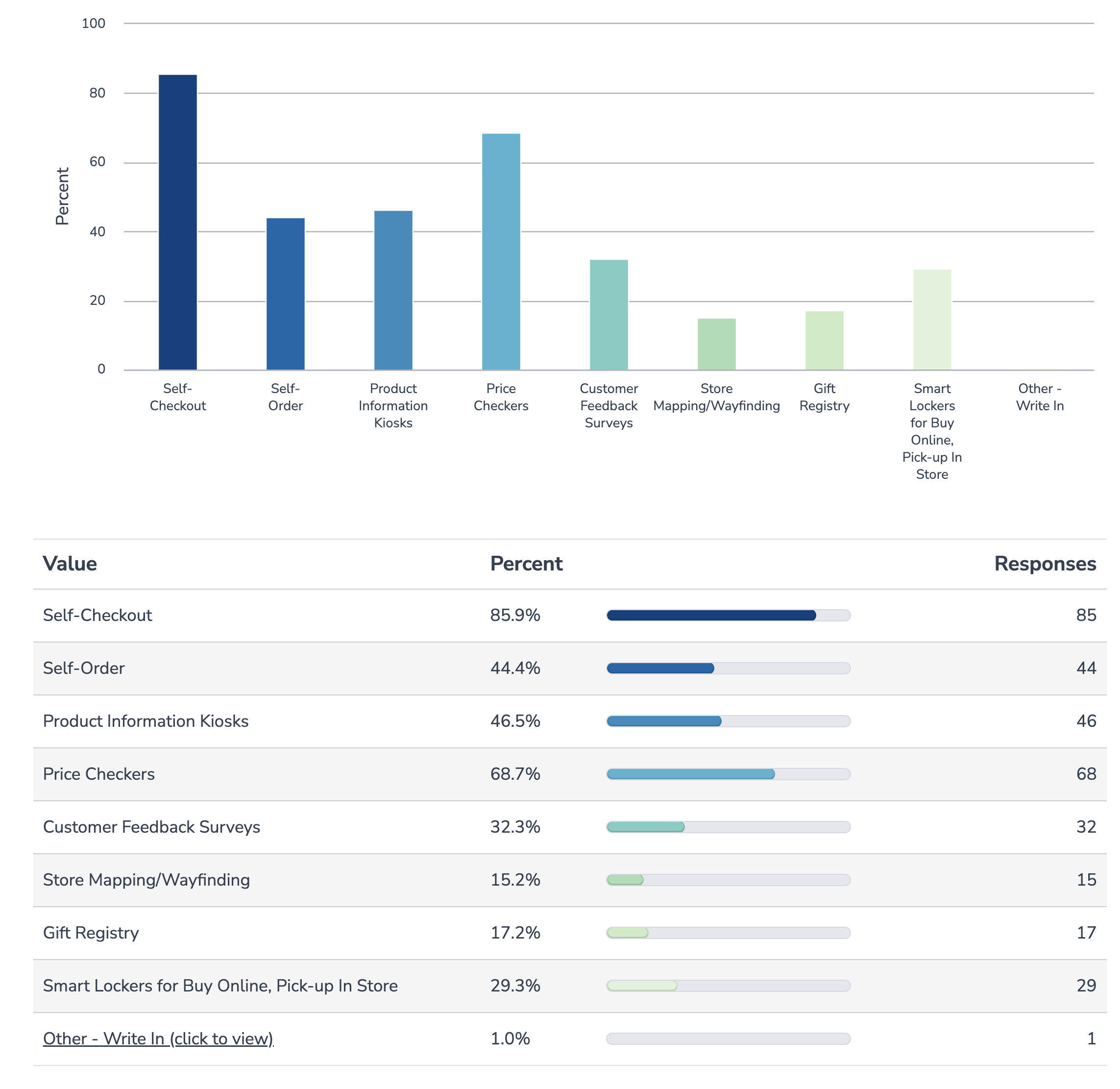
Question 9:
From your experience, what do you see as the key benefits of self-service technology?
Key takeaway: self-service technology is about value to businesses—not the cool factor nor other intangibles like "elevating the in-store experience."
People want shorter lines, increased sales, and convenience.
That checks out. Pun partially intended.
Question 10:
Which department owns the implementation of self-service technology within your company?
If you guessed that the IT function led here, you are correct.
Overall, on-site/in-house IT was the department most commonly tasked with self-service deployments, but we found that operations groups were most likely to handle deployments compared with corporate IT teams.
If we're analyzing this input correctly, it follows that even with larger organizations, the hands-on work is being handled at the individual chain/branch level versus by the parent company—this could be good news for VARs and system integrators looking for inroads with larger retail organizations at the local level.
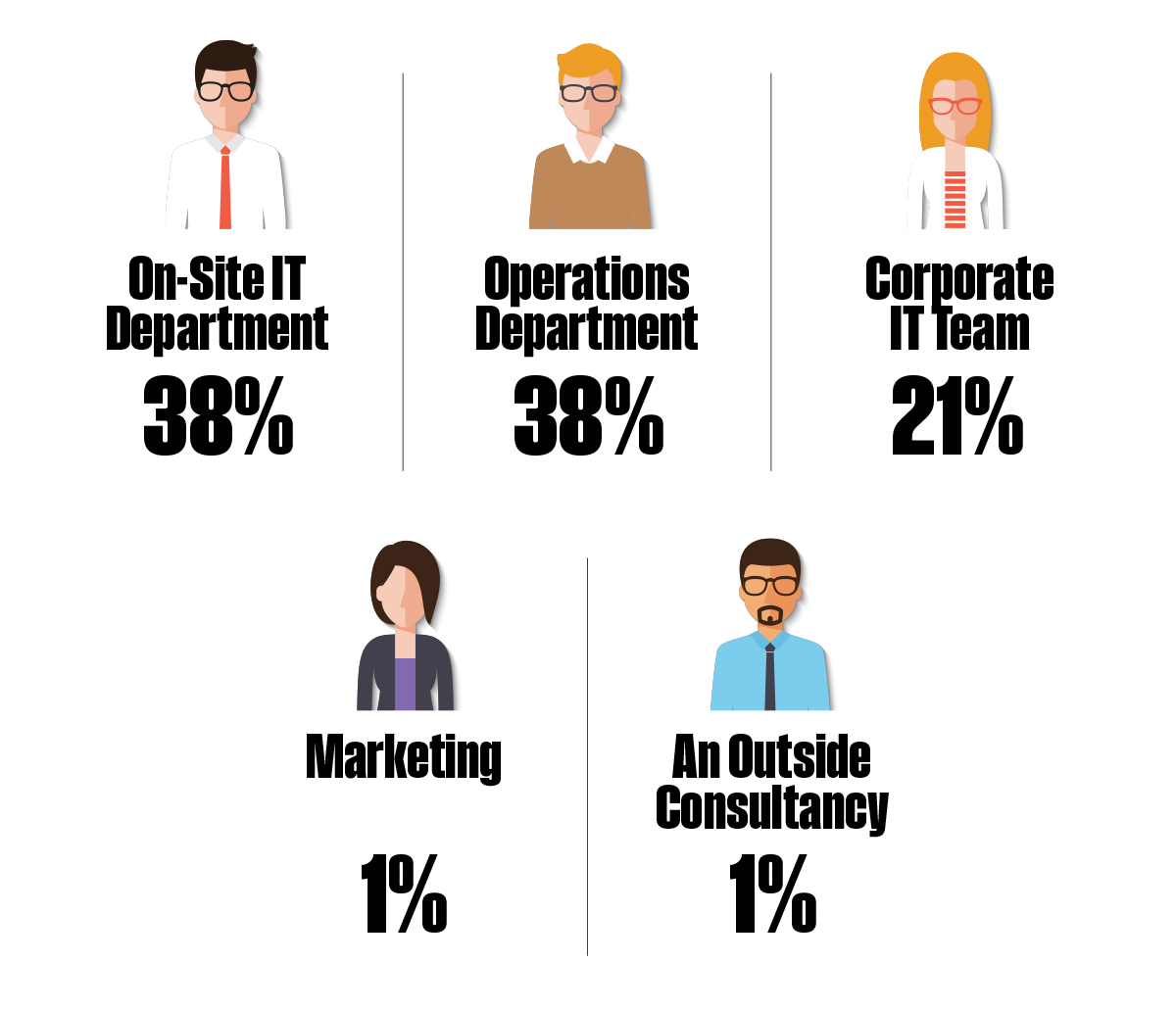
Question 11:
How is self-service hardware displayed in your business?
We were curious to know if one method of mounting self-service technology stood out from the group. We asked respondents to select all mounting formats that were present in their stores.
We found a solid mix of all options, although Touchscreens built/integrated into a custom kiosk or enclosure (64) did show up most commonly.
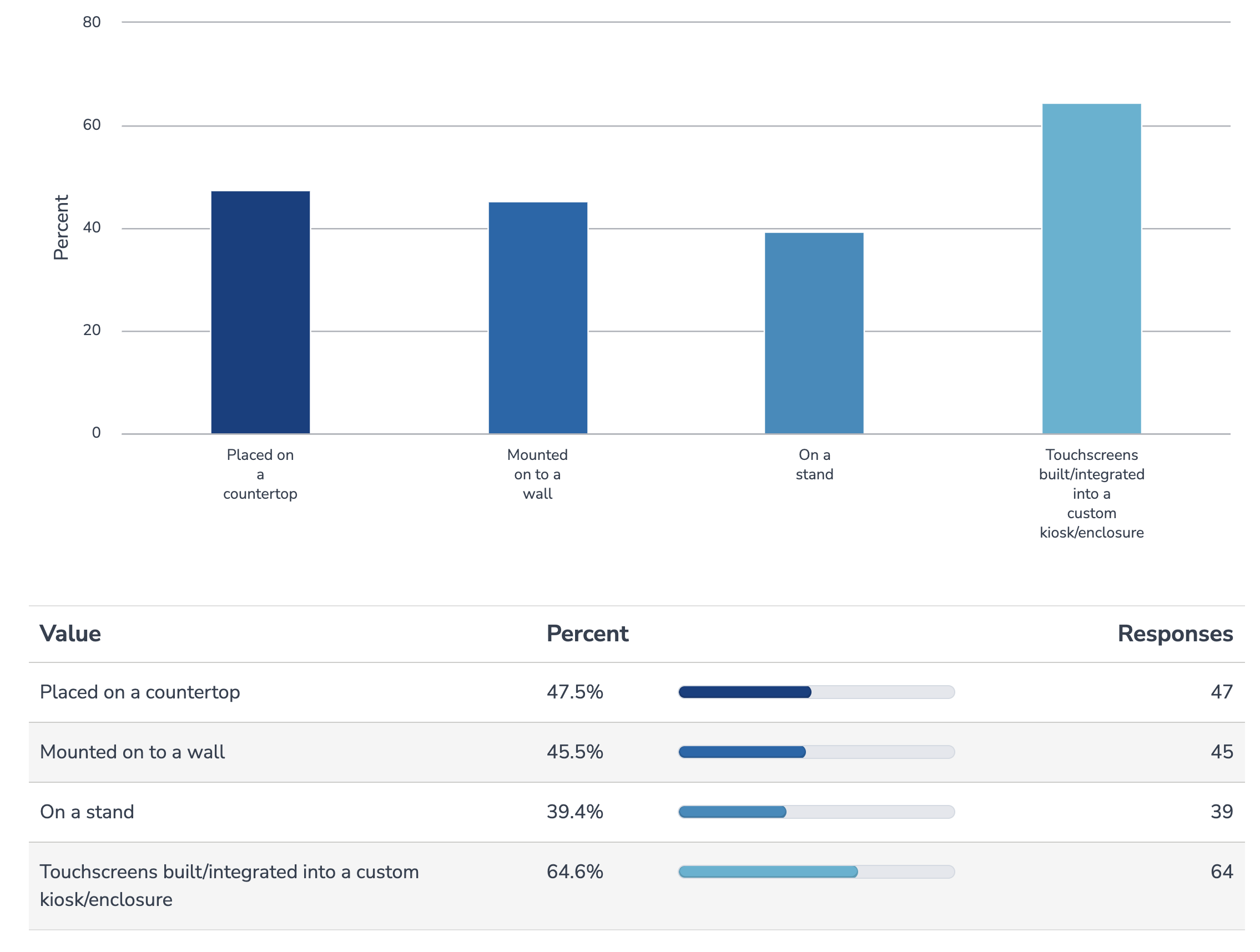
Question 12:
How often do you experience technical problems with your current self-service systems?
We learned early that 96% of respondents were at least somewhat satisfied, but does that correlate to how often they ran into technical problems with their deployment?
We think there is a strong case to be made here, considering that nearly half of all respondents said they Never (6) or Rarely - a few times a year (43) had issues with their self-service tech.
Of those that reported Monthly issues (26), Supermarket/Grocery (6) and Department Stores (5) showed up most frequently, but the margin was narrow and spread somewhat evenly.
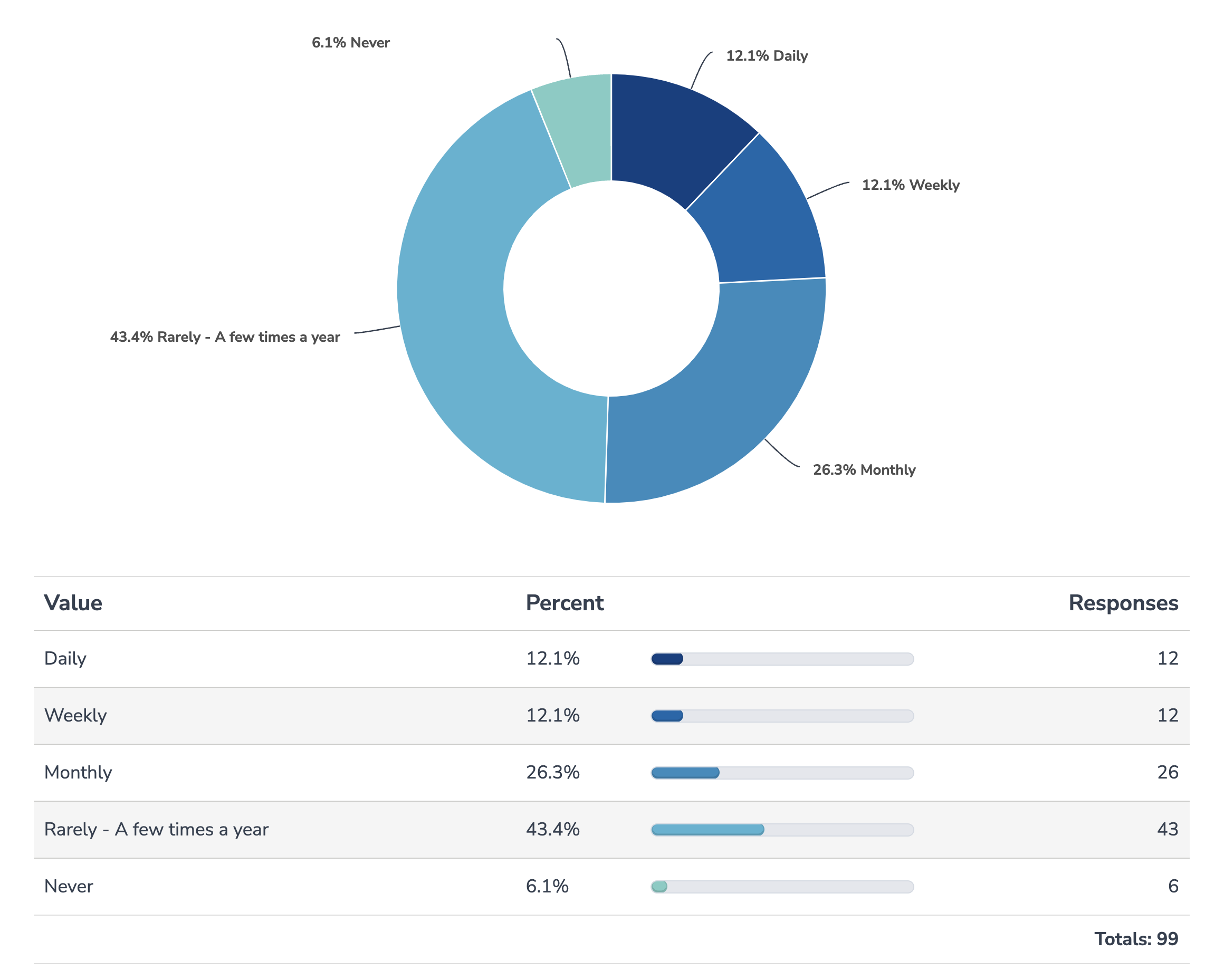
In summary:
As our world becomes more digital, retailers are increasingly turning to self-service technology to meet customer demands for convenience and efficiency.
Retailers are generally pleased with how their current self-service tech is performing, and deployments are most often being handled at the local level, which could represent opportunity for IT solution providers.
Self-service has become linked closely with the grocery/supermarket vertical, but our data suggests that its applications and deployments are far broader.
With 24% of responses indicating daily or weekly technical issues, local technical support is one possible foot-in-the-door angle for VARs and SIs looking to gain a foothold.
As always, we hope the data and insights presented here were illuminating and helpful for you in building an effective approach to the market. We'll see you next time.



